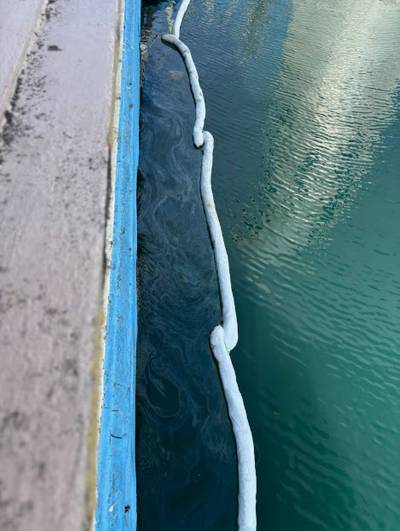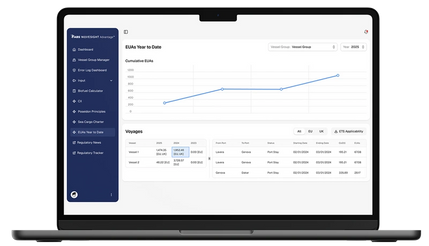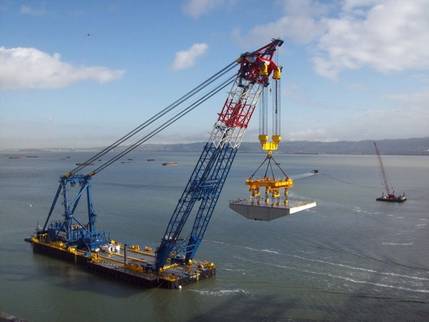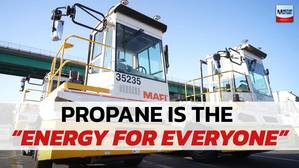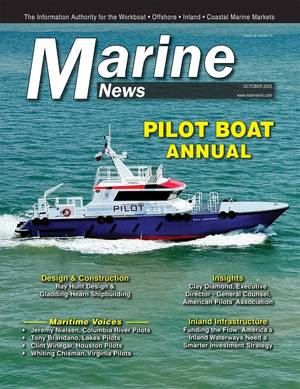Legacy Pipe Leaks Oil in San Juan Harbor
The US Coast Guard Sector San Juan’s Incident Management team is responding to an oil discharge from a legacy pipe structure between piers 2 and 3 in San Juan Habor, Puerto Rico.
“The source of the oil discharge is being contained and, while contained, will allow normal port operations to continue at Piers 2 and 3 as our investigation and response efforts continue,” said Lt. Cmdr. Ray Lopez, Coast Guard Sector San Juan Incident Management Division chief.
Coast Guard watchstanders in Sector San Juan received a National Response Center pollution report following a patrol by Station San Juan and Incident Management Division personnel in San Juan Harbor, April 11. The patrol was a planned effort in support of Operation Resilient Coast which led Coast Guard personnel to discover the legacy pipe was slowly and persistently leaking heavy black oil into the water. Suspecting the oil may be linked to similar pollution incidents in the area, the Coast Guard team collected samples to be analyzed at the Coast Guard Marine Safety Lab.
Due to the potential impacts to the waterway, the Coast Guard activated the Oil Spill Liability Trust Fund and contracted Clean Harbor Environmental Services, Inc. as the Oil Spill Removal Organization for the incident. On April 15, Clean Harbor crews temporarily plugged the affected pipe and deployed absorbent containment booms to capture and contain any material discharged into the water.
Currently, Coast Guard Sector San Juan Incident Management Division personnel and Clean Harbor crews are actively monitoring and servicing the containment area by replacing absorbent and repositioning containment boom as required.
On May 5, the Coast Guard Sector San Juan Incident Management Division received analysis results from the Coast Guard Marine Safety Lab which confirmed collected samples have similar characteristics to the samples from the 2024 Pier 9 and 2021 Pier 4 mystery spills. These important similarities indicate these samples may be related to each other through a common source of petroleum oil.
Future planned clean-up operations include conducting a sub-surface site assessment to help in finding a possible source, and further planning and development of potential response recovery strategies for any free oil product to reduce the likelihood of future incidents.



